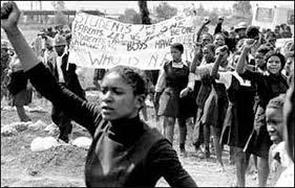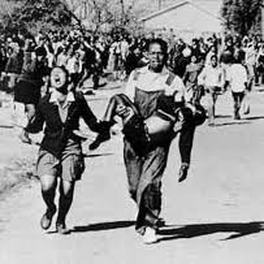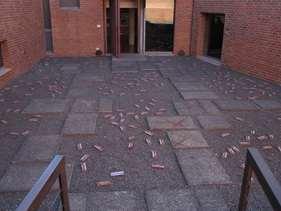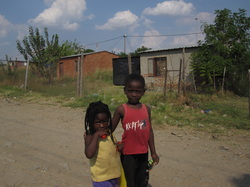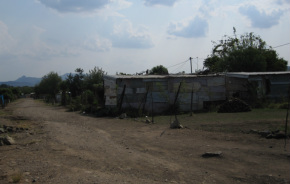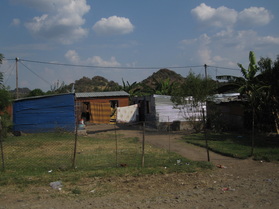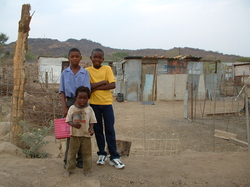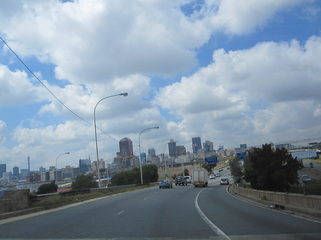
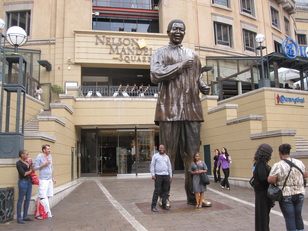
The day after this photo Mpho and I went to the Apartheid Museum. When you enter the museum you are given a ticket which is arbitrarily stamped either "blankes" or "nie-blankes," which is Afrikaans for "white" or "non-white." As it turned out Mpho got a "nie-blankes" ticket and I got a "blankes." As you enter the museum you are immediately separated according to your status, so Mpho and I were suddenly directed to different entrance ways, which felt weird. When we were later reunited in the museum, Mpho was quite upset and said it had brought back a lot of bad memories for her. Remember, anyone over the age of 25 grew up under apartheid. Mpho pointed out that under apartheid she and I could not have walked together in public. The multi-racial scene pictured above could not have happened.
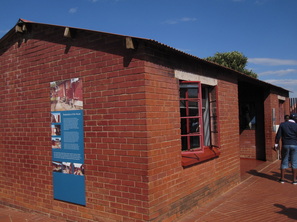
You might wonder what Mandela was doing during the Soweto uprisings in 1976. The answer is that he was already imprisoned on Robben Island and had served 14 years of what was to be a 27 year sentence. The struggle against apartheid was very long. When Mandela became president in 1994 he was already an old man of of 76. Still alive now at 94 years, he is more than twice as old as the average black male in South Africa. Mandela won a Nobel Peace Prize because he managed to transition South Africa to democracy while avoiding a race-based civil war that many thought was inevitable.
